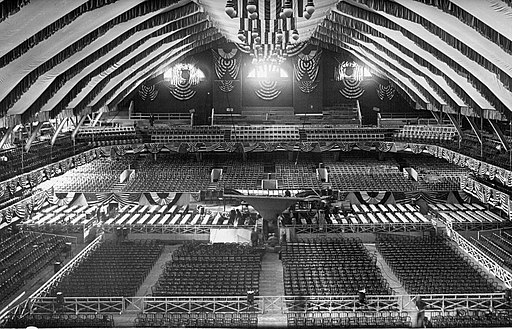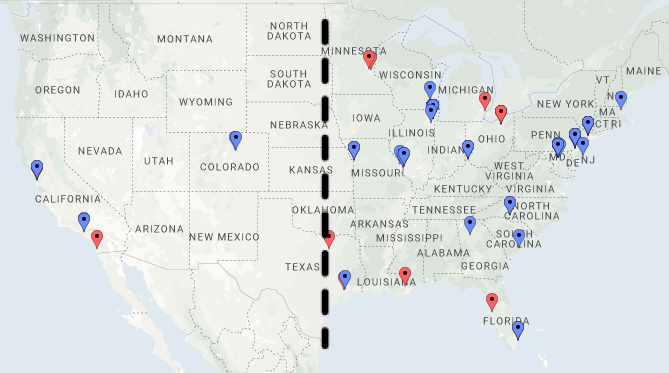There are many prosperous places across the United States. The most successful of these are called boomtowns, a.k.a. the fastest-growing cities in America. What factors determine whether a city reaches “boomtown” status? It all boils down to rapid population growth and increases in housing occupancy. The U.S.’s biggest boomtown has seen a five-year population increase more than 20 times the national average. We’ll give you a hint: the biggest boomtown is located in the state of Washington and it’s within driving distance of a major Washington city. Nearly 30% of all boomtowns in the U.S. are just miles away from a major city. However, not all boomtowns are created equal. While each state’s fastest-growing city is noted, several are seeing only minor population and housing occupancy increases. Some boomtowns are even facing negative population and housing growth. Find out more about the biggest boomtowns of every U.S. state on the map below.
View Biggest Boomtowns in a full screen map
The map contains data from GOBankingRates which they pulled from the U.S. Census Bureau’s 2007, 2012, and 2017 surveys. There are four groupable options on the map: both five- and ten-year changes in population and changes in owner-occupied housing units over five and 10 years.
Biggest Short & Long-Term Population Boomtowns
Short-Term Population Growth
The biggest boomtown of all is Kirkland, Washington. The U.S.’s fastest-growing city has seen a five-year population increase of 76.8%. That’s more than 20 times the national average (3.84%) and more than 39% greater than the next greatest increasing boomtown of Four Corners, Florida. Four Corners is the second-fastest-growing city in the U.S. with a 37.8% population growth also over a five year period. One percentage point lower than Four Corners is Enterprise, Nevada’s five-year population change. The city is increasing by 37.7%.

Of course, everything is bigger in Texas, including boomtowns. The U.S.’s fourth-largest boomtown is Conroe, Texas, which has a five-year population increase of 34.30%. Conroe is the last of the shorter-term boomtowns to increase 30% or over. The rest of the boomtowns are all seeing population growth of 28% or lower.
Long-Term Population Growth
While Kirkland, Washington beat out every other boomtown in five-year population growth, other boomtowns rise to the top when it comes to ten-year population increases. Given 10 years, several cities are bearing witness to more than 100% population growth. These cities include Waldorf, Maryland (183.30% population growth) Enterprise, Nevada (138.20% growth), and San Luis, Arizona (104.20%). The national ten-year increase is just 7.45%, so these towns clearly are boomin’.
Kirkland, Washington is down to the fourth-fastest-growing city given 10 years’ time with an increase of 89.9% during a decade. Tied for fourth with Kirkland is Wentzville, Missouri which also has an 89.9% increase in population over 10 years. There are seven other notable boomtowns with ten-year population growths of well-over 50%. These include:
- Mount Juliet, Tennessee
- Newnan, Georgia
- Four Corners, Florida
- Conroe, Texas
- South Jordan, Utah
- West Fargo, North Dakota
- Meridian, Idaho
Boomtowns Next To Boomin’ Cities
When looking at the map, you may notice that many boomtowns are located next to the states’ largest cities. For example, Kirkland, Washington looks pretty close to Seattle, which is the state’s biggest city. Our digital measuring tape confirms this; Kirkland is just eight miles from Seattle. With this in mind, Kirkland’s status as the biggest boomtown makes a whole lot of sense. Those looking for big-city living at a smaller city price may set up residence in Kirkland but easily commute to Seattle for work and a better nightlight. This is a trend that many boomtowns seem to follow.
Our measuring tool points out that Hillsboro, Oregon’s biggest boomtown, is only ten or so miles away from Oregon’s largest city: Portland. The same can be said for the boomtown of Enterprise, Nevada, which is around 12 miles away from Las Vegas. Texas’s boomtown, Conroe, is roughly 40 miles outside of Houston while Oswego, Illinois is 40 miles away from Chicago. Kansas’s fastest-growing city of Overland Park is right next to Kansas City and Carmel, Indiana is close to Indianapolis. Then there’s Mount Juliet, which is Tennessee’s biggest boomtown. Mount Juliet is located right by Nashville.
If you still don’t believe this is a trend, we’ve got many more examples. The boomtown of Newnan, Georgia, is right outside of Atlanta. Four Corners, Florida is close to Orlando while Ann Arbour, Michigan is near Detroit. South Carolina’s Mount Pleasant boomtown is remarkably close to Charleston, as is Massachuttet’s Somerville to Boston. And Waldorf, Maryland is just outside of Washington D.C. Boom, an explosive trend! These cities better watch out. If the populations of these cities continue to grow at the current rate, Kirkland is going to become the new Seattle and Four Corners the new Orlando.
Least Booming Boomtowns
We’re not really sure why Lewiston, Maine is on the list. With a five-year population change of -1% and a ten-year change of -4.20% (yes, you read that right, growth in the negatives) Lewiston is not necessarily what we’ve come to expect of a boomtown. But every state needs a boomtown, and apparently, Lewiston is Maine’s booming-est, although it’s the least booming on our list.
Providence, Rhode Island may be better than Lewiston when it comes to population growth (its at least a positive percentage) but when it comes to Providence’s five and ten-year change in owner-occupied housing units, there are nothing but negative numbers. Burlington, Vermont’s owner-occupied housing growth is also on the decline. Though this boomtown is experiencing a 0.5% population increase over five years and a 10% growth over 10 years, the city faces a -7.90% housing decline over five years -5.90% over 10 years.
Dover, New Hampshire, and Newark, Delaware are the only other boomtowns with negative growth rates. While Dover’s housing is positively increasing over five years, going back further brings this boomtown into a deficit of -1%. Newark, on the other hand, has a better ten-year housing growth of 9.90%. However, their five-year housing growth of Neward is -2.60%.
What qualifies one city as a boomtown could qualify another as an empty, desolate, sad little ghost town. Kirkland is currently the biggest boomtown, but Lewiston could turn it around in the next five years. We’ll check back in with you then.
All we know for sure is that boomtowns certainly vary in their boomy-ness, just as the cost of living in 388 cities worldwide varies. Before you up and move somewhere, note that the cost of living varies around with world. In fact, living in several Swiss cities can be 30% more expensive than living in N.Y.C., one of the most expensive in the U.S.





